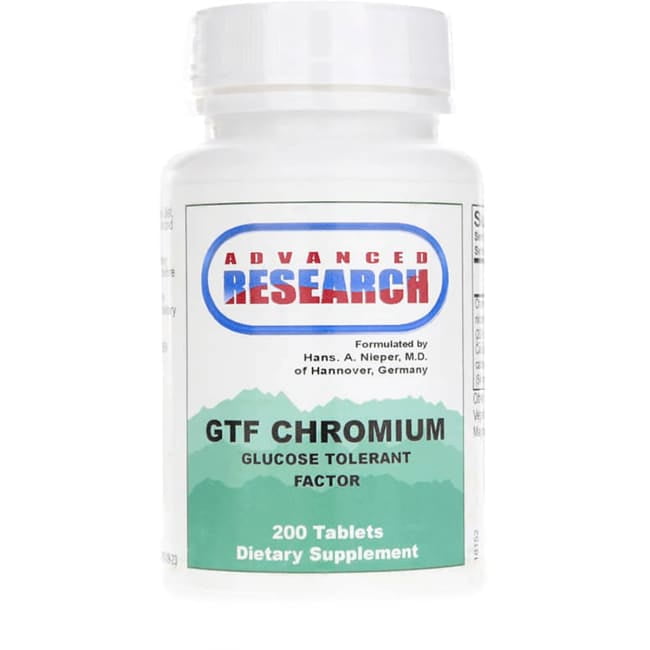

The key driver of this benefit is through chromium’s actions on a peptide called chromodulin, which is found within the cells. Through being respondent to insulin, sugar can effectively leave the blood and enter the cells where it can be used to create energy, or stored for later use. But how exactly does chromium help blood sugar regulation?Ĭhromium is thought to help regulate blood sugar by impacting how sensitive the cells are to insulin. Because of this, it should come as no surprise that the interest into chromium is burgeoning, with more and more individuals supplementing with this mineral on a daily basis. In both of these instances, glucose remains dangerously high in the blood which can lead to numerous serious health complications such as heart disease, kidney failure, nerve damage, blindness, obesity, amputations and muscle loss.Ĭurrently, over 420 million people worldwide suffer from type 2 diabetes, with this figure predicted to rise to 600 million in the next generation. The pathology of type 2 diabetes is characterised by either an insufficient secretion of insulin – the hormone that shuttles sugar into our cells to create energy, or the cells of the body being resistance to insulin.

Given chromium’s role as a glucose tolerance factor, it is widely used by individuals with impaired glucose tolerance or who are diabetic. In this article, we are going to explore the benefits of chromium, how much should be ingested or taken, and what are the side effects of too little or too much of this mineral. Chromium is commonly known as a ‘glucose tolerance factor’ because of its main function in the body. This trace mineral can be found in relatively small amounts in foods such as broccoli, some meats, seafood, nuts, wholegrains, herbs and spices. Do not use if pregnant or breastfeeding.Chromium is classed as an essential nutrient because the body does not have the capacity to create it. Consult a health care practitioner prior to use if you have a kidney disorder or diabetes. Consult a health care practitioner for use beyond 6 months. Corticosteroids cause a depletion of chromium.Ĭautions:For adult use only. Zinc and chromium compete for absorption and should be taken at different times.
CHROMIUM GLUCOSE TOLERANCE FACTOR PROFESSIONAL
Those with blood sugar imbalances should seek professional advice before supplementing with chromium. Chromium may decrease a diabetic's need for insulin and oral hypoglycemics. Chromium GTF and chromium chloride are less active forms of chromium.Īctive individuals and athletes need more chromium because they consume more carbohydrates than the general population. Chromium is chelated, or bonded, to the picolinate molecule or niacin, which takes it into the cell.

The most active forms of chromium supplementation are chromium picolinate and chromium polynicotinate. Some studies show that adding chromium to the diet reduces total body fat and increases muscle mass, making chromium an important supplement for athletes and those who are trying to lose weight. This occurs because the fetus is taking sugar out of the blood without the body realizing that it is. High cholesterol can be regulated with chromium supplementation.Ĭhromium is important for pregnant women because they often suffer with symptoms of blood sugar imbalances like nausea and fatigue. Chromium also plays a role in the synthesis of fats, cholesterol and proteins. Chromium supplementation also helps these individuals regulate their blood sugar. Hypoglycemic individuals suffer from the opposite problem as diabetics their blood sugar is too low. These are important reasons why the prevalence of type II diabetes is increasing and the need for chromium supplementation is growing. Only one in ten individuals has a diet that includes a sufficient amount of chromium. The standard North American diet is high in sugar and refined products, as well as being deficient in blood sugar stabilizing substances like fibre.Įventually the pancreas becomes worn out and does not produce as much insulin or the body's cells become intolerant after years of high insulin levels. Without insulin sugar stays in the blood, and cells become starved for energy. It allows the intake of glucose by the cells as a fuel source. Insulin is released from the pancreas, in response to sugar intake. It maintains stable blood sugar levels by regulating the workings of the hormone insulin. Ĭhromium is sometimes referred to as glucose tolerance factor (GTF) because of the vital role it plays in the metabolism of sugar for energy.


 0 kommentar(er)
0 kommentar(er)
